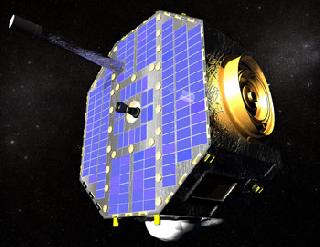
The Interstellar Boundary Explorer is the latest in NASA’s series of low-cost, rapidly developed Small Explorers spacecraft. Photo: NASA.
WASHINGTON (BNS): The Interstellar Boundary Explorer (IBEX) mission of NASA has shown different conditions at the edge of the solar system, which is more dynamic and surprising for the space physicists.
NASA scientists have finished assembling a second complete sweep around the sky.
The second map released by the IBEX in six months has shown dramatic changes in an unpredicted bright ribbon of energetic neutral atoms emanating towards the Sun, which appears to have 'untied', although the large scale structure of the ribbon has remained stable.
NASA had launched the IBEX on October 19, 2008, since then it has seen views of a collision zone far beyond the planets, roughly 10 billion miles away.
The Interstellar Boundary Explorer (IBEX) mission objective is to discover the nature of the interactions between the solar wind and the interstellar medium at the edge of our solar system.
The solar wind flowing out of the sun inflates a bubble that is known as heliosphere. IBEX monitors the conditions at the boundary between the local interstellar medium and the heliosphere – the protective bubble that shields and protects the solar system.
No spacecraft had ever imaged the collision zone, which occurs in a region known as the heliosheath, because it emits no light. But the two detectors on IBEX are designed to “see” what the human eye cannot.
“We thought we might detect small changes occurring gradually throughout the Sun’s 11-year-long activity cycle, but not over just 6 months,” David McComas (Southwest Research Institute), principal investigator for the IBEX mission and the paper’s lead author, said.
McComas says the drop-off in intensity between the two all-sky maps perhaps makes sense, because the Sun is only now emerging from an unusually long period of very low activity and a correspondingly weak solar wind.
“We didn’t plan it this way, but it’s an almost perfect situation, in that we’re seeing the interaction in its simplest state — before trying to interpret what turns out to be a much more complicated interaction than anticipated,” he added.
The outer heliosphere would be stable over time — and IBEX is showing that it’s not and thus the game is changing completely.
 Previous Article
Previous Article Next Article
Next Article













The Indian Air Force, in its flight trials evaluation report submitted before the Defence Ministry l..
view articleAn insight into the Medium Multi-Role Combat Aircraft competition...
view articleSky enthusiasts can now spot the International Space Station (ISS) commanded by Indian-American astr..
view article